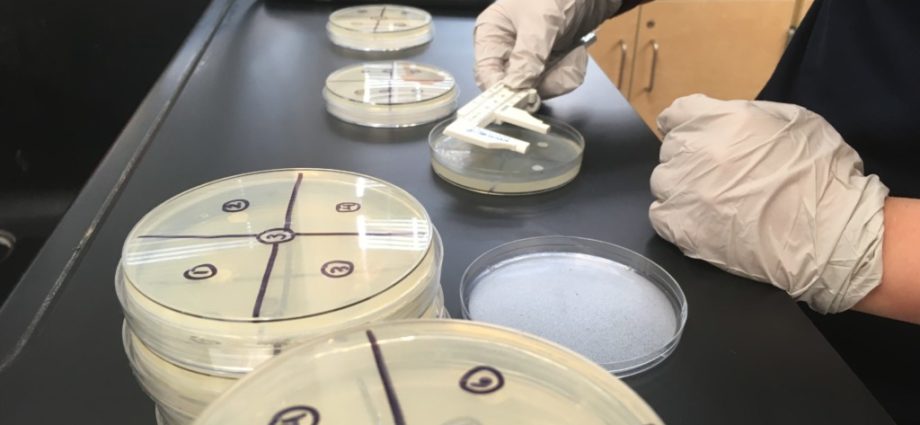Junior Saemee Kim: Chemicals for Sanitization
Every day, junior Saemee Kim and her family used antibacterial wipes and hand sanitizer without a second thought. Then, Kim said something caught her eye on one of the packages.
“My family started using this brand of wipes that had a very prominent label saying ‘made without Benzalkonium chloride,’” Kim said, “and I was like, ‘Why in the world is this brand advertising that it’s not using a chemical I’ve never heard of before?’”
Kim explored this mystery chemical, testing the efficiency of different concentrations of Benzalkonium chloride, water and ethyl alcohol on the growth of bacteria.
Kim said the project was important to her because it was all about better understanding the products we use.
“With COVID,” she said, “we’re using all these sanitizing chemicals, but which ones are actually effective? What is a good mixture?”
After analysis of her experiment, she discovered that the solutions using Benzalkonium chloride were more effective than just ethyl alcohol.
Junior Julia Simpson: Spin Rate of Pulsar Stars
Pulsars: rapidly spinning, radioactive stars as big as large cities that inhabit the universe. For students like junior Julia Simpson, these phenomena are fascinating.
The Pulsar Search Collaboratory is a project that teaches students about “big data” collection. Simpson was introduced to the program by her IB Physics teacher Amy Speegle, who said the student was instantly intrigued.
“[It] really sparked my interest in pulsars, ” Simpson said, referring to a measure of how fast the pulsar spins. “I began to wonder if distance from the galactic center could affect pulse period. I couldn’t find any information so I thought: why not do it for Science Fair?”
Using measurements from the Australia Telescope National Facility Pulsar Catalog, Simpson calculated the distance between different pulsars and the center of the galaxy, and discovered those closer to the galaxy’s edges spun faster.
“The results are not exactly what I expected, but are pretty close,” she said. “I could see this project being used in education or data collection about pulsars, or possibly on formation of galaxies. Pulse periods can be used to determine age, so it might be useful for that.”
Junior Shaunak Sinha: Alt. Energy from Waves
Ocean waves are a powerful source of renewable energy–but less researched than their solar, wind and hydroelectric counterparts.
Junior Shaunak Sinha aimed to better understand how tools like wave converters, machines that harness energy from the movement of waves, can be most effective. To do this, he employed a computing program called a neural network to find locations where wave energy is most powerful.
“For me,” Sinha said, “Environmental science [is] like a big thing.”
He said he hopes this research can aid the effective placement of wave energy converters.
“If you know the optimized place where you can put [the converter], then it has maximum efficiency,” he said.
This way, environmental scientists can more easily understand the power and applications of wave energy.
Junior Aleksej Bosnjak: Gravity and Pendulums
Grandfather clocks are everywhere: historical dramas, scientific videos, antique shops. However, the physics of such objects can be complicated.
Junior Aleksej Bosnjak decided to investigate how pendulums, like those in grandfather clocks, would behave in wind tunnels.
“The goal is to hopefully find a formula on how to calculate the period of a pendulum, which is the time it takes to swing left and then back right,” Bosnjak said.
Bosnjak said his project has applications not only in the present, but also the future.
“When our space industry increases and we travel to different planets, one of the things we want to figure out is the gravitational pull,” he said.
If there were strong winds on the hypothetical planet, scientists would be able to use research like Bosnjak’s to understand this unfamiliar gravity.
Bosnjak said he wants to pursue this field of research but, ironically, that he originally chose the project because his other ideas for the science fair weren’t approved.
“This idea got approved and I decided to stick with it,” he said. “The clock was ticking.”

